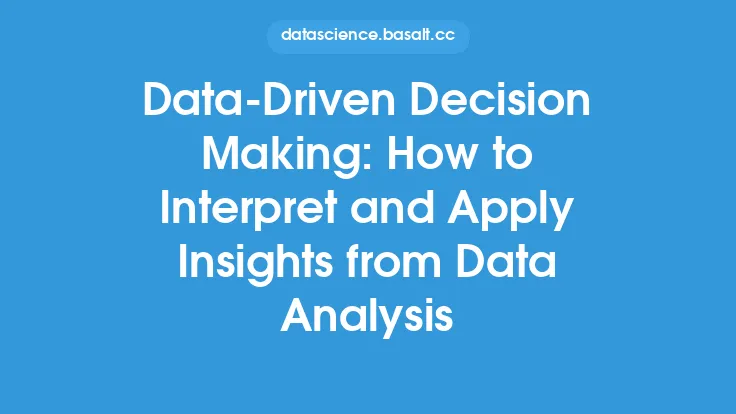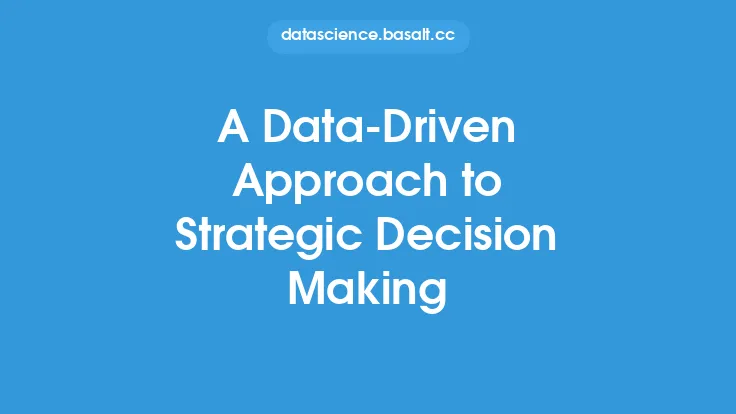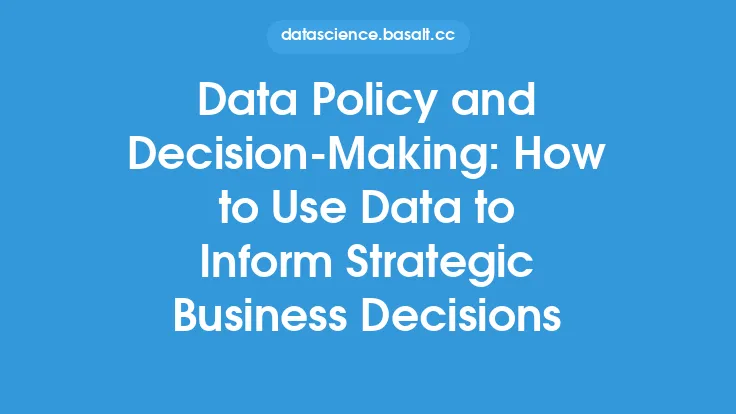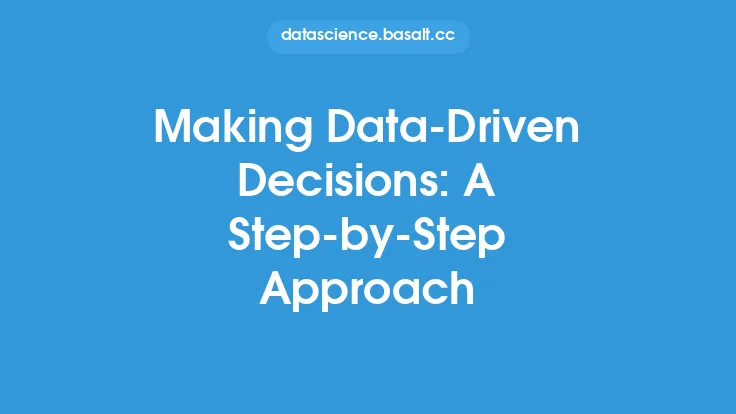In today's fast-paced and competitive business landscape, making informed decisions is crucial for driving growth, improving efficiency, and staying ahead of the curve. One approach that has gained significant traction in recent years is data-driven decision making, which involves using data and analytics to inform business decisions. This approach has become a key differentiator for successful organizations, enabling them to make better decisions, reduce risks, and improve outcomes.
Introduction to Data-Driven Decision Making
Data-driven decision making is a methodology that relies on data analysis and interpretation to guide business decisions. It involves collecting and analyzing large datasets, identifying patterns and trends, and using this information to inform strategic decisions. This approach is based on the idea that data is a valuable asset that can provide insights into customer behavior, market trends, and operational efficiency. By leveraging data and analytics, organizations can make more informed decisions, reduce uncertainty, and improve their chances of success.
The Benefits of Data-Driven Decision Making
The benefits of data-driven decision making are numerous and well-documented. Some of the most significant advantages include improved decision-making accuracy, increased efficiency, and enhanced competitiveness. By using data and analytics, organizations can identify areas of improvement, optimize processes, and make more informed decisions about investments, resource allocation, and strategic initiatives. Additionally, data-driven decision making can help organizations to reduce risks, improve customer satisfaction, and increase revenue.
The Role of Data Analytics in Decision Making
Data analytics plays a critical role in data-driven decision making, as it provides the insights and information needed to inform business decisions. Data analytics involves the use of statistical and computational methods to analyze and interpret large datasets, identifying patterns, trends, and correlations. This information can be used to develop predictive models, forecast future trends, and identify areas of improvement. Some common data analytics techniques used in decision making include regression analysis, decision trees, clustering, and neural networks.
Data Quality and Governance
Data quality and governance are essential components of data-driven decision making, as they ensure that the data used to inform decisions is accurate, reliable, and relevant. Data quality refers to the accuracy, completeness, and consistency of the data, while data governance refers to the policies, procedures, and standards used to manage and maintain the data. Organizations must establish robust data governance frameworks to ensure that their data is properly managed, secured, and maintained. This includes implementing data validation, data cleansing, and data normalization techniques to ensure that the data is accurate and reliable.
Data Visualization and Storytelling
Data visualization and storytelling are critical components of data-driven decision making, as they enable organizations to communicate complex data insights to stakeholders and decision-makers. Data visualization involves the use of graphical and visual techniques to represent data, making it easier to understand and interpret. Data storytelling involves the use of narrative techniques to convey the insights and findings from the data, making it more engaging and memorable. Some common data visualization tools used in decision making include dashboards, reports, and scorecards.
Technical Requirements for Data-Driven Decision Making
To implement data-driven decision making, organizations require a range of technical capabilities, including data management, data analytics, and data visualization. Some of the key technical requirements include data warehousing, business intelligence tools, and data science platforms. Data warehousing involves the use of specialized databases to store and manage large datasets, while business intelligence tools provide the capabilities to analyze and visualize the data. Data science platforms, such as Python, R, and SQL, provide the capabilities to develop and deploy predictive models and machine learning algorithms.
Implementation and Adoption
Implementing data-driven decision making requires a structured approach, involving several key steps, including data collection, data analysis, and decision-making. Organizations must first identify the business problems they want to solve, then collect and analyze the relevant data, and finally use the insights to inform their decisions. To adopt data-driven decision making, organizations must also establish a culture of data-driven decision making, providing training and support to employees and stakeholders. This includes developing data literacy programs, providing access to data and analytics tools, and encouraging a culture of experimentation and innovation.
Common Challenges and Limitations
Despite the benefits of data-driven decision making, there are several common challenges and limitations that organizations may face. Some of the most significant challenges include data quality issues, lack of data governance, and limited analytical capabilities. Additionally, organizations may face cultural and organizational barriers, including resistance to change, lack of data literacy, and limited resources. To overcome these challenges, organizations must establish robust data governance frameworks, invest in data analytics and visualization tools, and provide training and support to employees and stakeholders.
Future Directions and Trends
The future of data-driven decision making is exciting and rapidly evolving, with several key trends and directions emerging. Some of the most significant trends include the use of artificial intelligence and machine learning, the adoption of cloud-based data platforms, and the increasing importance of data ethics and governance. Additionally, organizations are increasingly using data-driven decision making to drive digital transformation, improve customer experience, and create new business models. As data becomes increasingly ubiquitous and accessible, organizations must be prepared to adapt and evolve their data-driven decision-making capabilities to stay ahead of the curve.





